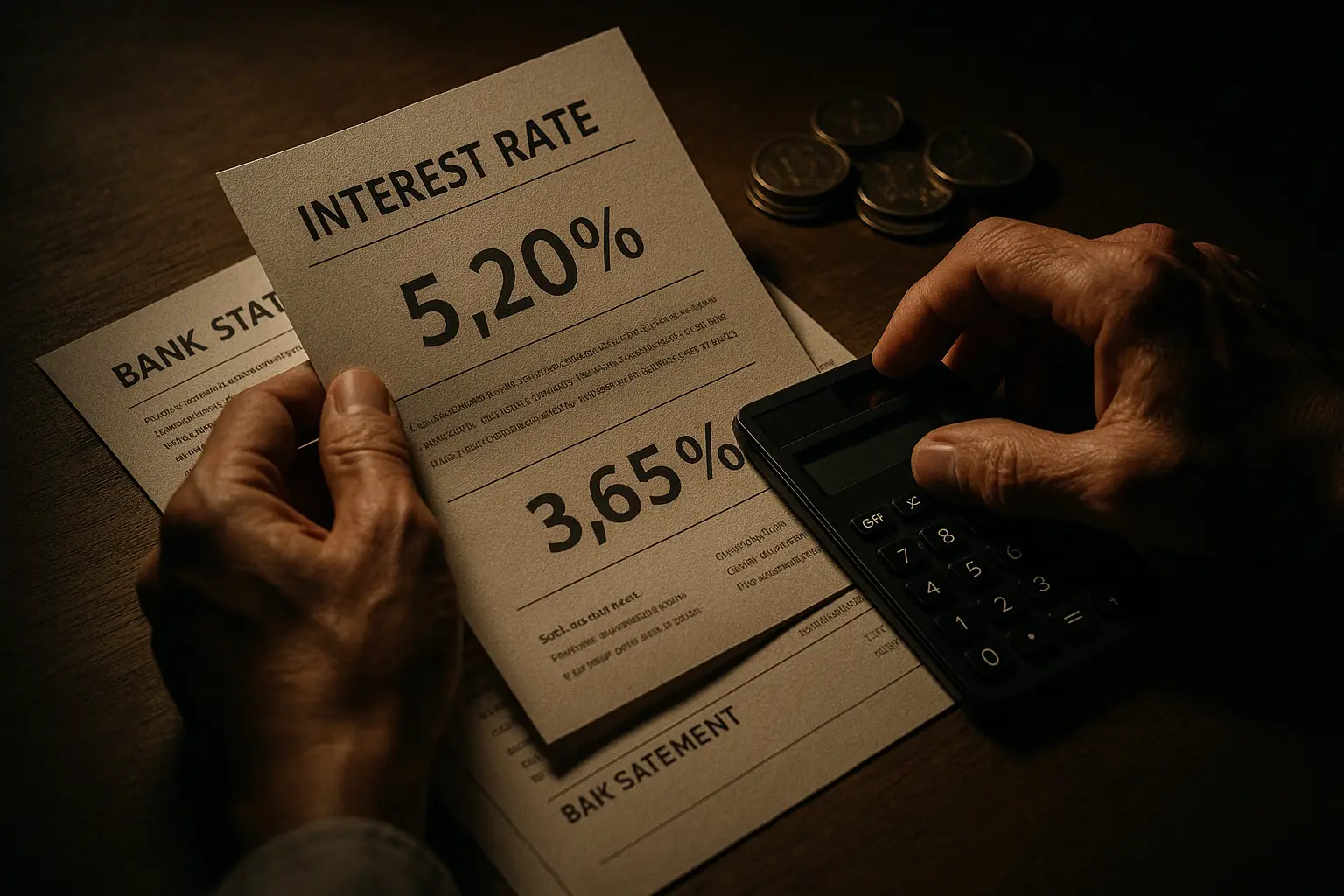Types of children’s savings accounts in the UK
The best savings account for children in the UK typically falls into categories like junior cash ISAs, regular saver accounts, and easy access options, each designed to build financial habits while earning interest. Junior cash ISAs offer tax-free growth up to £9,000 annually for under-18s, making them ideal for long-term savings without tax worries. Regular saver accounts encourage monthly deposits, often with higher rates for consistent saving, while easy access accounts provide flexibility for shorter-term needs.
Junior cash ISAs
A junior cash ISA, or JISA, is a tax-free wrapper for children’s savings, locking funds until age 18 but protected from tax on interest earned. These accounts are popular for their higher allowances and security, with top rates reaching 5.5% AER in 2025 according to MoneySavingExpert. Parents can open one for kids under 16, offering peace of mind for future education or milestones.
Regular saver accounts
Regular saver accounts for children require fixed monthly deposits, rewarding discipline with boosted interest rates, sometimes up to 6% AER for limited periods. They suit families teaching budgeting, but watch for withdrawal penalties. For the best regular savings account for children, check providers like Nationwide, which offer child-specific versions.
Easy access options
Easy access children’s accounts allow instant withdrawals, perfect for emergencies or short goals, with rates around 4-5% AER. They have no lock-in, but rates can fluctuate. Kids bank accounts often link to these, combining savings with basic banking for under-18s.
Top junior savings accounts with highest rates 2025
In 2025, the best child savings account UK options deliver up to 5.5% AER on junior accounts, outpacing inflation and adult rates for family planning. Focus on FSCS-protected providers for safety up to £85,000. Ethical choices like Monzo’s junior saver hit 4.25% while supporting sustainability.
Accounts offering 5%+ AER
Top picks include Coventry Building Society’s Children’s Regular Saver at 5.5% AER for £25-£100 monthly deposits, and Halifax Kids’ Saver at 5% for easy access. These high-yield accounts maximize growth; compare via Which? for latest rates.
Tip: Always verify current AER as rates change; use comparison sites for the best high interest savings account for children.
| Provider | AER (%) | Min Deposit | Access Type | Max Balance |
|---|---|---|---|---|
| Coventry BS | 5.5 | £25/month | Regular Saver | £1,800/year |
| Halifax | 5.0 | £1 | Easy Access | Unlimited |
| Nationwide | 4.8 | £1 | Junior ISA | £9,000/year |
| Monzo (Ethical) | 4.25 | £0 | Easy Access | Unlimited |
Ethical and provider comparisons
Ethical accounts from providers like Coventry emphasize green investments, balancing yields with values at up to 4.25% AER per Good with Money. Compare standard vs ethical: traditional banks like HSBC offer higher rates but less sustainability focus.
Age-specific recommendations
For children under 5, opt for no-minimum easy access like NatWest’s Children’s Saver at 2.5% AER to start small. These build habits without pressure; avoid locked ISAs until older.
Tax rules and benefits for children’s savings
Children’s savings are largely tax-free if interest stays under £100 per child annually, but parental contributions count toward the parent’s £1,000 personal savings allowance (PSA). Junior ISAs sidestep this entirely with £9,000 tax-free limit.
Personal savings allowance impact
Parents control most accounts, so interest over £100/child attributes to the parent’s PSA of £1,000 tax-free, per Which?. Exceed this, and basic-rate tax applies at 20%.
Junior ISA limits
JISAs allow £9,000 yearly tax-free, maturing at 18 for the child to control. They’re superior for larger sums versus regular accounts.
Child Trust Fund transfers
Legacy Child Trust Funds (average £1,500-£2,000 at maturity) can transfer to JISAs for better rates; check via Forbes Advisor UK. Update balances as 2024 data may vary.
How to choose the best account for your child
Prioritise AER, access needs, and tax efficiency when selecting the best savings account UK for children. Balance growth with liquidity.
Factors to consider
Key factors: age eligibility (most from birth), minimum deposits (£1-£25), and withdrawal rules (JISAs lock until 18). FSCS protection covers all UK-regulated accounts.
- High AER for growth
- Low fees or none
- Ethical alignment if valued
- App-based access for tech-savvy families
For broader context, explore the best savings account options for the family.
Opening process
Parents open accounts online or in-branch with child’s birth certificate and address proof. Steps: Choose provider, verify eligibility, deposit initial funds. Full guide at HMRC for ISAs.
Tip: Link to a best savings account uk for parental accounts to consolidate family finances.
Common mistakes
Avoid ignoring tax implications or choosing low-rate accounts; don’t withdraw early from fixed terms, losing bonuses.
Expert tips from Martin Lewis and MSE
Martin Lewis recommends JISAs for tax-free compounding, urging rate checks monthly via MoneySavingExpert. For the martin lewis best savings account insights, follow MSE alerts.
Rate alerts
Sign up for MSE emails to catch rate drops; switch promptly for better yields.
Switching advice
Easy to switch easy-access accounts; JISAs allow one provider change yearly without penalty.
Long-term planning
Start early for compound interest; aim for £9,000 annual JISA max to build a nest egg.
Frequently asked questions
What is the best savings account for a child under 18?
The best savings account for a child under 18 in the UK is often a Junior ISA offering up to 5.5% AER tax-free, like those from Coventry or Nationwide, as they provide long-term growth without tax erosion. These accounts suit various needs, from easy access for flexibility to fixed regular savers for disciplined saving. Consider your child’s age and your saving goals; for under-5s, low-minimum easy access builds habits without commitment. Always compare current rates, as they vary, and ensure FSCS protection for security.
Are Junior ISAs worth it?
Junior ISAs are worth it for most families due to the £9,000 annual tax-free allowance, shielding interest from parental tax bands and allowing compound growth until age 18. Unlike regular accounts, they avoid the £100 child interest limit, making them ideal for larger contributions. However, funds are inaccessible until maturity, so balance with easy access if liquidity is needed. Experts like Martin Lewis highlight their value for future-proofing against rising costs like university fees.
How much interest can a child’s savings earn in the UK?
A child’s savings can earn up to 5.5% AER in top 2025 accounts, potentially growing £1,000 to £1,055 in a year tax-free under the £100 limit or within a JISA. Rates depend on account type: regular savers boost to 6% for monthly deposits, while easy access hovers at 4-5%. Inflation erodes real returns, so aim higher than the Bank of England base rate. Track via sites like Moneyfacts for the best savings account interest rates for children.
What are the tax rules for children’s savings?
Children’s savings interest is tax-free up to £100 per child annually if parents control the account; excess counts toward the parent’s £1,000 PSA. JISAs bypass this entirely with full tax exemption up to £9,000 yearly. Gifts from grandparents may qualify for separate £100 limits, reducing parental tax risk. Consult HMRC for precise rules, as miscalculating can lead to unexpected bills; Martin Lewis advises JISAs to simplify compliance.
Can parents open a savings account for their child?
Yes, parents or guardians can open a savings account for children under 16, acting as trustees until age 18, with options like kids savings accounts or JISAs. Required documents include the child’s birth certificate and proof of address; online applications take minutes. Legal control stays with parents, but ethical considerations like involving older kids in decisions foster financial literacy. For the best child savings account UK, ensure it aligns with family tax situation to maximize benefits.
What’s the difference between a Junior ISA and a regular savings account?
A Junior ISA offers tax-free savings up to £9,000 yearly with funds locked until 18, ideal for long-term goals like a house deposit, while regular savings accounts allow flexible access but tax on interest over £100. JISAs often have higher rates due to tax efficiency, but no withdrawals; regular ones suit short-term needs with potential bonuses for deposits. Choose based on horizon: JISA for growth, regular for liquidity. Advanced users might combine both, transferring CTFs into JISAs for optimization.
Disclaimer: Rates are variable and correct as of October 2025; this is general guidance, not personal advice. Consult a financial advisor for your situation.





